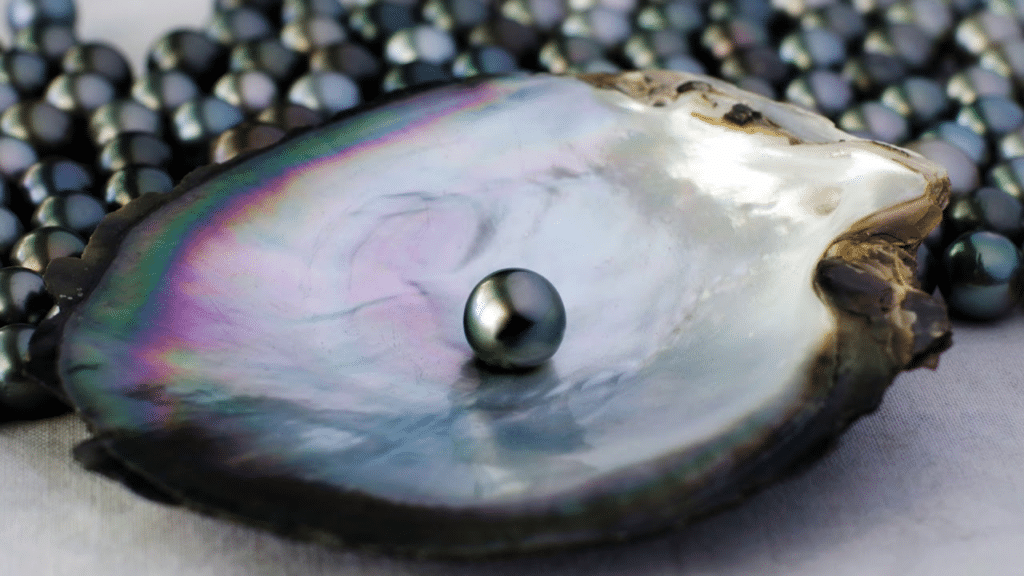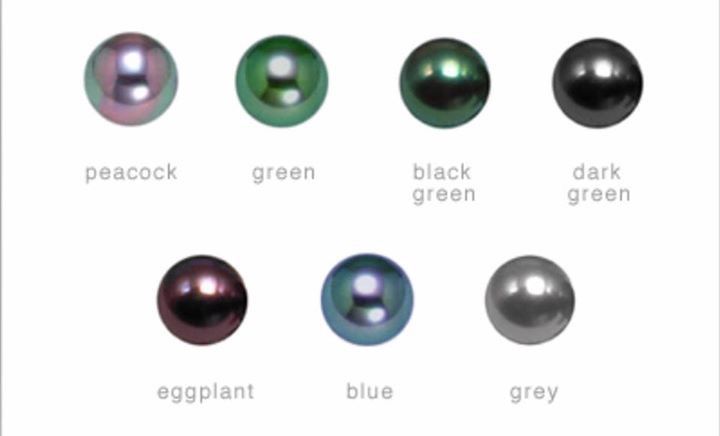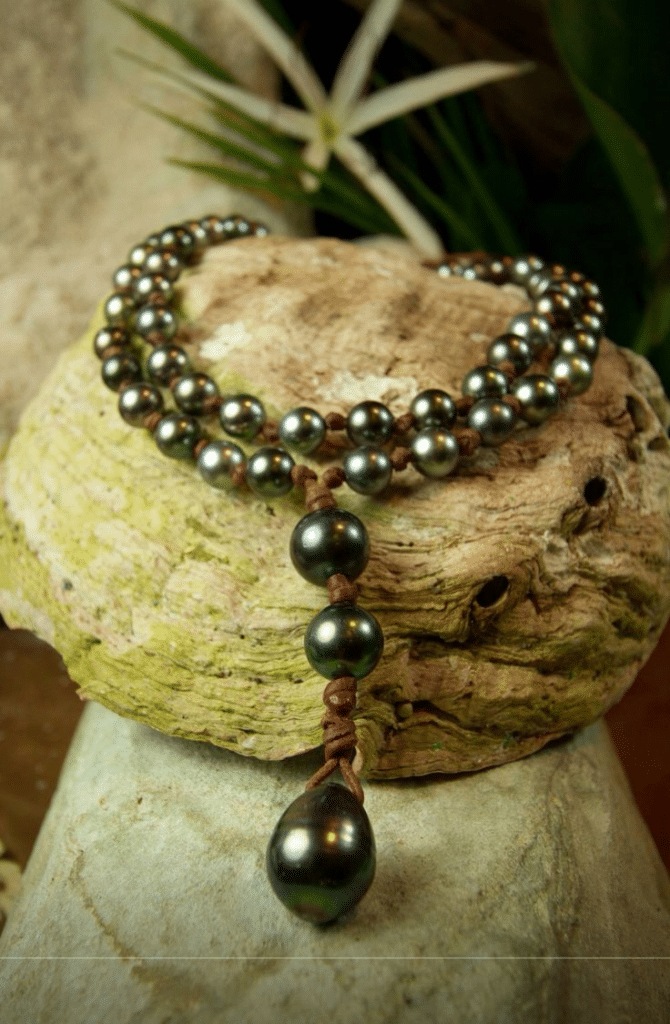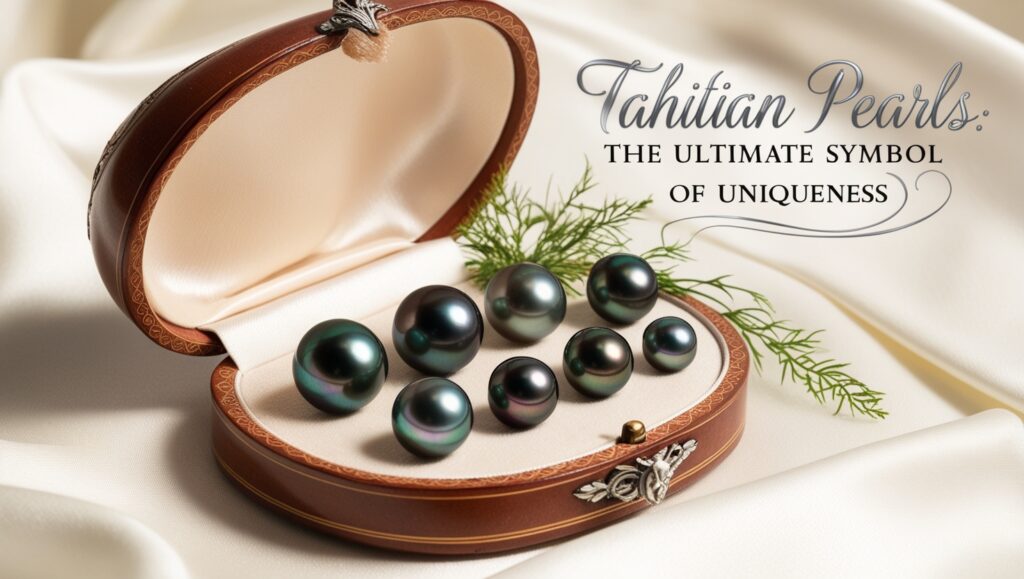Tahitian pearls, often referred to as black pearls, are among the most captivating and luxurious gems in the world. Their striking colors, mesmerizing luster, and rich history make them more than just an ornament – they’re a testament to resilience, beauty, and strength. Whether you’re a collector, a jewelry enthusiast, or simply intrigued by their allure, this guide will dive deep into everything about Tahitian pearls: their origins, unique qualities, symbolism, and care.

The Origin, History, and Cultural Significance of Tahitian Pearls
Myths and Legends
Tahitian pearls are steeped in Polynesian myths and folklore. One legend tells of Oro, the god of war and peace, descending from the heavens to gift a black pearl to humankind. The pearl symbolized divine love and connection, believed to be imbued with strength and wisdom.
Another tale explains how the moon’s rays blessed the black-lipped oyster (Pinctada margaritifera), creating the pearls’ radiant overtones. This connection to celestial bodies and natural forces elevated Tahitian pearls as emblems of mystery and power.
You might also like The Ultimate Pearl Guide.
Discovery and Early Use
Historically, Tahitian pearls were revered by Polynesian royalty and considered treasures of the ocean. When Europeans first encountered them during the 18th century, their fascination led to increased demand, transforming Tahitian pearls into global luxury items.
Cultural Evolution
Modern pearl farming in French Polynesia began in the mid-20th century. This sustainable industry revitalized local economies and reinforced the pearls’ status as cultural icons. Today, they’re celebrated as both a heritage symbol and a statement of elegance.
What Makes Tahitian Pearls Unique?
Formation and Characteristics
Tahitian pearls are cultivated exclusively in the black-lipped oyster, a species native to the lagoons of French Polynesia. Unlike most pearls, they develop naturally with dark hues, giving them a striking appearance. Their nacre (the material forming the pearl) is thicker than that of most other cultured pearls, enhancing their durability and luster.
Color Spectrum and “Peacock” Tones
What truly sets Tahitian pearls apart is their color spectrum. They’re not just black but exhibit a range of overtones:
- Peacock Green: A combination of green and purple hues.
- Aubergine: Deep purple tones.
- Silver: Light metallic hues.
- Blue and Teal: Striking oceanic shades.

These colors result from the interaction of light with the pearl’s nacre, creating a luminous effect known as orient.
| Feature | Description |
|---|---|
| Oyster Species | Black-lipped oyster (Pinctada margaritifera) |
| Average Size | 8mm to 16mm |
| Color Variations | Green, purple, silver, blue |
| Formation Time | 18 to 24 months |
Learn more at A Guide To Pearl Formation and Natural vs Cultured Pearls
Symbolism and Strength: Why Tahitian Pearls Resonate
Strength in Nature
Tahitian pearls form as a natural response to irritants introduced into the oyster. This process mirrors resilience and growth under pressure, making them a perfect metaphor for inner strength and transformation.
Cultural and Modern Symbolism
In Polynesian culture, Tahitian pearls are symbols of prosperity, wisdom, and love. In modern contexts, they’ve come to represent personal empowerment and elegance, often chosen to mark significant milestones or as meaningful gifts.
“A Tahitian pearl is more than a jewel; it’s a story of transformation and beauty born from adversity.”

How to Identify Authentic Tahitian Pearls
Physical Indicators
- Luster: Authentic Tahitian pearls have a mirror-like shine.
- Surface Quality: Look for minor imperfections; perfect surfaces are rare and highly valued.
- Shape: While round pearls are prized, baroque shapes showcase unique beauty.
Natural vs. Treated Pearls
- Natural Tahitian pearls derive their color organically from the black-lipped oyster.
- Treated pearls may be dyed to mimic the natural hues of Tahitian pearls. Always verify authenticity through certifications.
Testing Methods
- Tooth Test: Genuine pearls feel gritty when rubbed against teeth.
- Certification: Reputable sellers provide documentation detailing the pearl’s origin, quality, and authenticity.
Must Read The Ultimate Guide to Conch Pearls.
The Rarity and Value of Tahitian Pearls
Factors Influencing Rarity
Tahitian pearls are cultivated in limited quantities due to the specific requirements of the black-lipped oyster. Factors like water quality, temperature, and farming techniques affect production.
What Determines Value
- Size: Larger pearls (over 12mm) command higher prices.
- Color: Rare hues like peacock green and aubergine are highly sought after.
- Luster: A higher luster indicates superior quality.
- Shape: Round pearls are rare and expensive; baroque shapes offer unique appeal.
| Characteristic | Impact on Price |
|---|---|
| Size | Larger = Higher Cost |
| Shape | Round > Baroque |
| Surface Quality | Fewer Flaws = Premium |
Tahitian Pearl Jewelry: A Statement of Strength and Elegance
Popular Jewelry Designs
- Necklaces: Single-strand necklaces exude timeless sophistication.
- Earrings: From studs to chandeliers, earrings highlight the pearls’ luminous beauty.
- Rings: Statement rings with a single Tahitian pearl as the centerpiece.
- Bracelets: Modern designs incorporate pearls with minimalist metals.

Styling Tips
- Pair Tahitian pearls with monochromatic outfits to let their colors pop.
- Mix with other gemstones for a bold, contemporary look.
- Layer strands of different lengths for a fashionable statement.
Care and Maintenance of Tahitian Pearls
Daily Care Tips
- Wipe pearls with a soft, damp cloth after wearing to remove oils and dirt.
- Avoid exposing them to harsh chemicals like perfume or hairspray.
Proper Storage
- Store pearls in a soft cloth pouch, separate from other jewelry to prevent scratching.
- Keep them in a cool, dry place to maintain their luster.
Market Trends and the Future of Tahitian Pearls
Rising Popularity
Tahitian pearls are experiencing growing demand in luxury markets due to their uniqueness and sustainability. Ethical pearl farming practices have also boosted consumer confidence.
Explore Akoya Pearls: The Ultimate Symbol or Glamour.
Investment Potential
As natural resources become scarcer, the value of authentic Tahitian pearls expects to rise, making them both a fashion statement and a financial asset.
“Tahitian pearls are not just beautiful; they’re an investment in timeless elegance.”
Conclusion
Tahitian pearls represent the perfect blend of natural beauty, cultural significance, and modern luxury. Their strength lies not only in their physical durability but also in their ability to inspire and empower. Whether you wear them as jewelry or treasure them as heirlooms, Tahitian pearls will always stand as symbols of resilience and elegance.
Embrace their beauty, honor their legacy, and let Tahitian pearls become a part of your story.

Astro Sari is a seasoned blogger with a deep passion for pearls and oceanic gems. With years of experience in the field, he brings insightful knowledge and engaging content to Pearl Mystique. His expertise helps readers explore the beauty, history, and significance of pearls in a captivating way.







